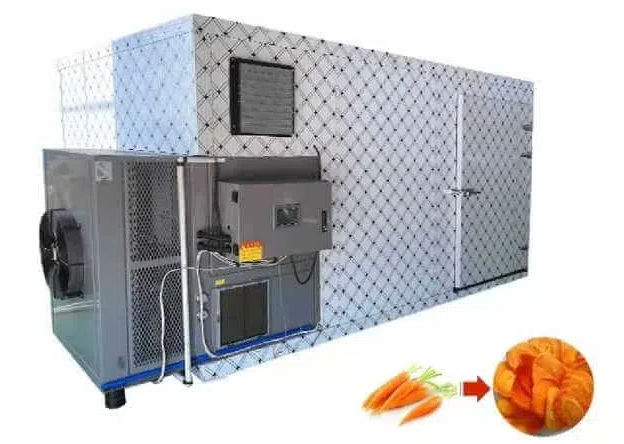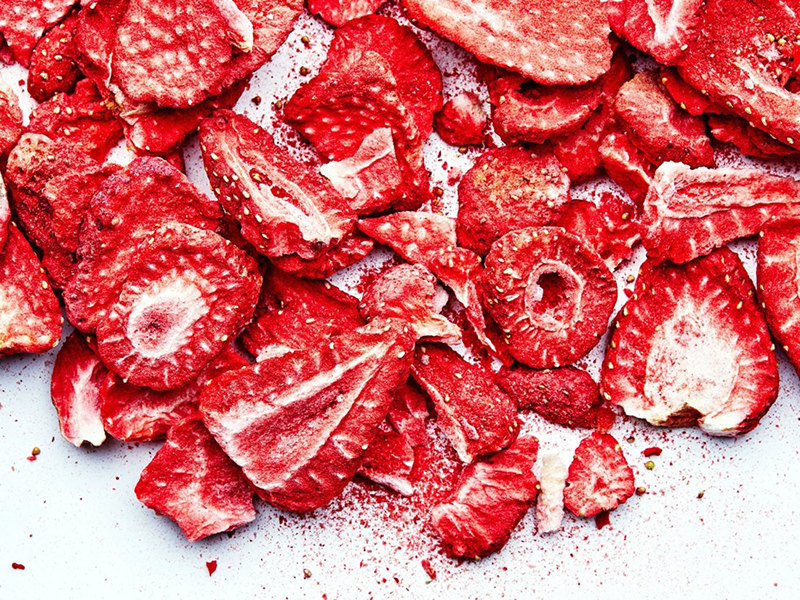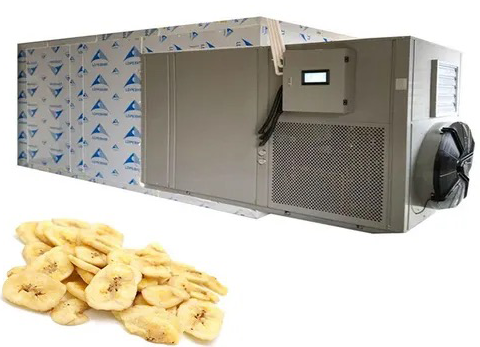
Content Menu
● Introduction to Food Drying Machines
>> Types of Food Drying Machines
● Benefits of Using Food Drying Machines
>> Extended Shelf Life
>> Healthier Snacking Options
>> Cost Savings
● Maximizing Investment with Room Type Drying Machines
● Enhancing Production Efficiency
>> Integration with Packaging Systems
>> Data Analytics for Optimization
● Market Trends and Opportunities
>> Expanding Product Lines
>> Customization for Niche Markets
● Conclusion
● FAQ
>> 1. What Types of Food Can Be Processed in a Food Drying Machine?
>> 2. How Do Food Drying Machines Preserve Nutrients?
>> 3. What Are the Benefits of Using a Food Dehydrator Over Traditional Ovens?
>> 4. How Can Room Type Drying Machines Enhance Production Efficiency?
>> 5. What Maintenance Practices Are Essential for Room Type Drying Machines?
● Citations:
In the realm of food processing, room type drying machines have emerged as a crucial tool for maximizing efficiency and profitability. These machines are designed to optimize the drying process, ensuring that food products retain their quality and nutritional value while extending their shelf life. As a Chinese manufacturer specializing in OEM services for international brands, wholesalers, and producers, we delve into the world of food drying machines, exploring their types, benefits, and how they can enhance your investment.

Introduction to Food Drying Machines
Food drying machines, also known as food dehydrators, are specialized appliances that remove moisture from various food items. This process is essential for preserving fruits, vegetables, meats, herbs, and dairy products by preventing the growth of bacteria, yeast, and molds that can spoil food. The machines work by circulating warm air around the food, gradually reducing its water content without cooking it, thus preserving nutrients and flavors.
Types of Food Drying Machines
1. Batch Type Fruits and Vegetable Dryer: These machines use heat pump dryers and can handle batches of 150 to 300 kg. They are automatic, featuring 48 trays, and require a power rating of 8 kW.
2. Small Single Door Tray Type Food Dehydrator: This compact machine uses hot air circulation with a high-temperature resistant axial flow fan. It has a capacity of 80 kg per batch and requires a power rating of 9 kW.
3. Large Industrial Food Dehydrator Machine: With a capacity of 350 kg per batch, these machines come with either 96 or 144 trays and require 20 kW of electricity.
4. Conveyor Mesh Belt Industrial Food Dryer: These are continuous drying machines suitable for large-scale production. They can be customized to meet specific production needs.
5. Continuous Potato Chips Dryer: Designed for drying potato chips continuously, this machine also removes excess oil from fried chips.
Benefits of Using Food Drying Machines
Extended Shelf Life
One of the primary benefits of food drying machines is their ability to significantly extend the shelf life of food. By removing moisture, these machines prevent the growth of bacteria, yeast, and molds, allowing you to enjoy fruits, vegetables, and herbs long after their harvest season.
Healthier Snacking Options
Dehydrating food concentrates its flavors, making them more intense and enjoyable. Additionally, the process helps retain most of the nutrients, offering a nutritious option for meals.
Cost Savings
By drying and preserving excess foods, you can use up products that might otherwise go to waste. Dried food has a longer shelf life than fresh foods, so you can buy it in bulk and not worry about throwing away the excess.
Maximizing Investment with Room Type Drying Machines
Room type drying machines are designed to optimize the drying process in a controlled environment. These machines are ideal for large-scale production, offering high capacity and efficiency. Here are some strategies to maximize your investment:
1. Energy Efficiency: Investing in machines with advanced technologies like heat pumps can significantly reduce energy costs. For instance, hang type dryers can save up to 75% on electricity compared to traditional methods.
2. Automation: Automated controls decrease the need for manual intervention, allowing staff to focus on other essential tasks and reducing labor costs.
3. Customization: Machines can be customized to meet specific production needs, enhancing production capacity without compromising quality.
4. Maintenance: Regular maintenance is crucial for extending the life of the machine and ensuring consistent results. This includes cleaning, inspecting heating elements, and checking for mechanical issues.

Enhancing Production Efficiency
To further enhance production efficiency, businesses can integrate room type drying machines with other processing equipment. For example, combining drying with packaging lines can streamline operations and reduce handling costs. Additionally, using data analytics to monitor production metrics can help identify areas for improvement and optimize the drying process.
Integration with Packaging Systems
Integrating drying machines with automated packaging systems allows for seamless transition from drying to packaging. This not only speeds up the production process but also minimizes manual handling errors.
Data Analytics for Optimization
Using data analytics tools to monitor temperature, humidity, and airflow can provide insights into how to optimize the drying process. By analyzing these metrics, producers can adjust settings to achieve the best drying results while minimizing energy consumption.
Market Trends and Opportunities
The demand for food drying machines is on the rise globally, driven by consumer interest in healthy, convenient food options. This trend presents opportunities for businesses to expand their product lines and cater to diverse market needs.
Expanding Product Lines
By offering a variety of dried products, businesses can tap into niche markets and attract a broader customer base. For instance, dried fruits and vegetables are popular among health-conscious consumers, while dried meats appeal to outdoor enthusiasts.
Customization for Niche Markets
Customizing drying processes for specific products can help businesses cater to niche markets. For example, creating specialty dried herbs for culinary use or developing unique snack products like fruit leather.
Conclusion
In conclusion, room type drying machines offer a powerful solution for maximizing investment in the food processing industry. By leveraging advanced technologies and optimizing production processes, businesses can enhance efficiency, reduce costs, and improve product quality. Whether you are a brand owner, wholesaler, or producer, integrating these machines into your operations can significantly boost profitability and sustainability.

FAQ
1. What Types of Food Can Be Processed in a Food Drying Machine?
Food drying machines can process a wide variety of foods, including fruits, vegetables, meats, grains, flowers, and even dairy products. They are versatile and can be used for making granola, fruit leather, and other specialty items.
2. How Do Food Drying Machines Preserve Nutrients?
Dehydrating food uses relatively low temperatures over long periods, which helps preserve nutrients and enzymes. Unlike other preservation methods like freezing or canning, dehydrating minimizes nutrient loss.
3. What Are the Benefits of Using a Food Dehydrator Over Traditional Ovens?
Food dehydrators provide precise temperature control and consistent airflow, which is crucial for effective drying. Unlike ovens, they prevent hot spots and ensure uniform drying without cooking the food.
4. How Can Room Type Drying Machines Enhance Production Efficiency?
Room type drying machines offer high capacity and can be customized for specific production needs. They also provide a controlled environment that ensures consistent drying quality and reduces energy consumption.
5. What Maintenance Practices Are Essential for Room Type Drying Machines?
Regular cleaning, inspection of heating elements, and checking for mechanical issues are crucial. Additionally, ensuring proper airflow and maintaining digital controls can enhance performance and extend the machine's lifespan.
Citations:
[1] https://www.ikemachinery.com/food-drying-machine/
[2] https://www.dryeratech.com/room-type-drying-machines-a-comprehensive-guide.html
[3] https://itpo-tokyo.unido.org/en/technology_db/6436/
[4] https://www.ike.cn/video.html
[5] https://www.youtube.com/watch?v=qtC36z0HleQ
[6] https://caloris.com/blog/maximizing-roi/
[7] https://www.dryeratech.com/the-cost-effectiveness-of-using-a-hang-type-dryer-over-time.html
[8] https://harvestright.com/faqs/
[9] https://www.dehydrate2store.com/howto/how-to-dehydrate-faq/
[10] https://www.dryeratech.com/how-to-maintain-your-room-type-drying-machine.html
[11] https://etsolutions.in/what-are-the-advantages-of-a-food-dehydrator-machine-in-india/
[12] https://airtekdehydrator.com/blog/types-commercial-food-dehydrators/
[13] https://www.linkedin.com/pulse/common-questions-food-dehydrators-aradmachinery
[14] https://blazemac.com/food-drying-machine-mastering-food-preservation.html
[15] https://www.fox-foodprocessinginabox.eu/drying-technologies/
[16] https://itpo-tokyo.unido.org/en/technology_db/6690/
[17] https://aradmachineryco.com/article/Food-dehydrator-buying-guide
[18] https://www.alamy.com/stock-photo/drying-machine.html
[19] https://www.istockphoto.com/photos/food-dryer
[20] https://www.youtube.com/watch?v=A5Nf2P7-nbU
[21] https://www.youtube.com/watch?v=9DSGcVhjHEc
[22] https://www.youtube.com/watch?v=rR2G5UO-5Ms
[23] https://www.youtube.com/watch?v=l81gCTvoUjg
[24] https://backpackinglight.com/home-freeze-dryer-worth-money/
[25] https://pubs.rsc.org/en/content/articlehtml/2023/fb/d3fb00080j
[26] https://www.freezedryingsystems.in/cost-analysis-of-implementing-a-food-freeze-drying-system-in-a-manufacturing-facility.html
[27] https://ageconsearch.umn.edu/record/313389/files/mrr639.pdf
[28] https://mrsscientificinstruments.com/maximizing-efficiency-with-tray-dryers/
[29] https://www.reemmak.com.tr/en/freeze-dry-technology/blog-posts/economic-advantages-of-using-a-freeze-dryer
[30] https://www.electroluxprofessional.com/au/blog/troubleshooting-common-issues-with-commercial-tumble-dryers/
[31] https://www.bxdrymachine.com/faq
[32] https://www.webstaurantstore.com/guide/741/food-dehydrators-buying-guide.html











